Hey guys,
I wanted to further explore the subject and work with the data a bit more. What I found was pretty interesting.
I agree with a lot of the feedback. It's unrealistic to group "commons" with "stars" to arrive at an average price. I decided to split the two and look at their numbers separately. First, I had to decide what constituted a "star" from a statistical stand point - I figured the easiest way would be by taking the 50 most expensive cards out, and designating the remaining as "commons".
NOTE: While some might argue against this approach it actually was an effective way of keeping the hard to find commons while filtering out the lower dollar Hall of Famers.
Now, just for the sake of it, here are the 50 most expensive T206 cards in PSA 4 (I chose this measure because it contained the most data from VCP). These are the cards I consider "stars" for the purpose of this discussion:
NOTE: I want to keep "stars" in quotations because I know that some people would argue this list.
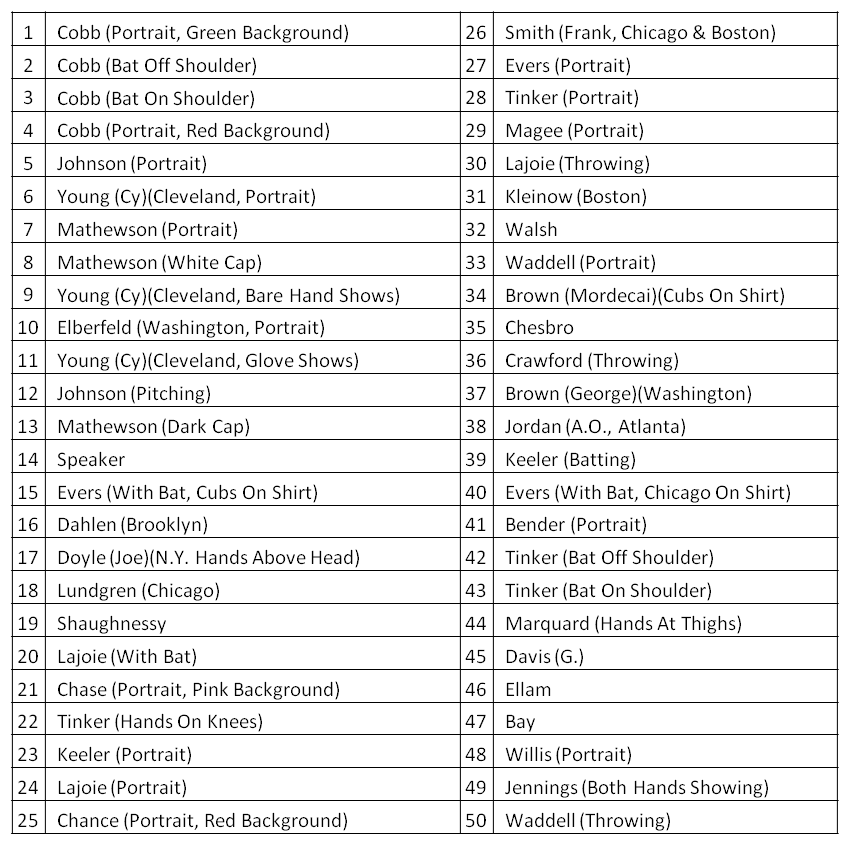
Once I had my "stars" I found the average prices in each grade (2-7) for PSA and SGC.
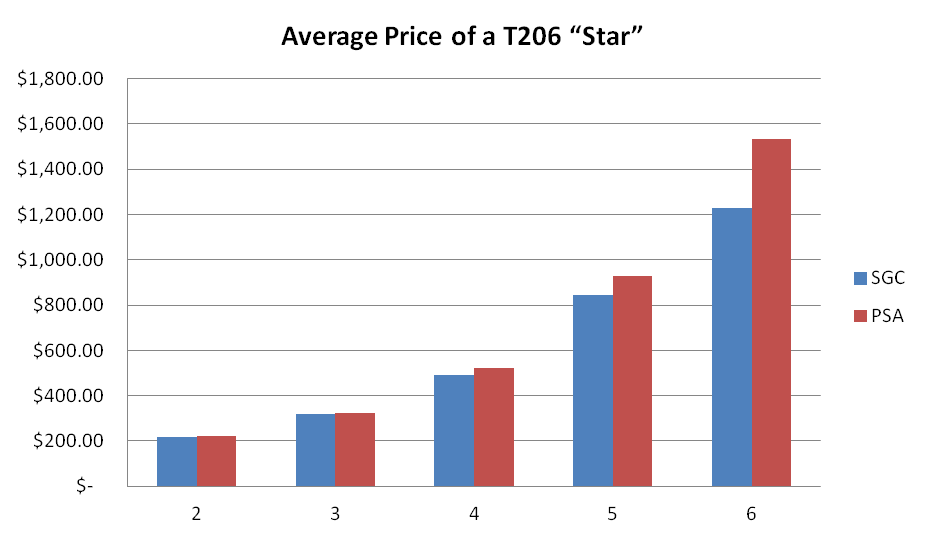
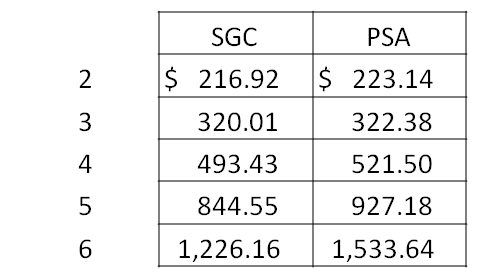
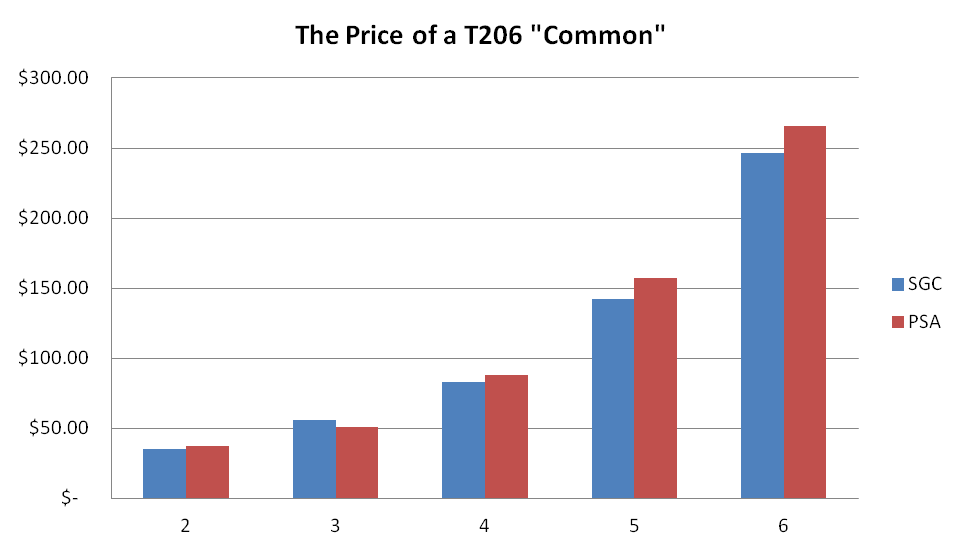
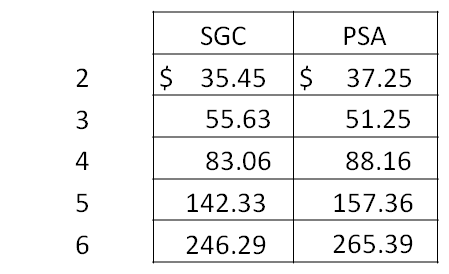
The results were pretty surprising in two regards: SGC commons are virtually identical in price compared to their PSA counterparts and low grade SGC cards can run for a premium over PSA.
Another observation (that may not surprise many) was that high grade PSA stars carry a premium over SGC. I think this is in large due to registry fanatics and those "investor" type collectors I talked about in my previous post. However, I am much more interested in the "commons".
Why would SGC 3 "commons" demand a premium over PSA 3's?
This is especially interesting because there is a huge concentration of SGC 3's on the market:
(From my previous post)
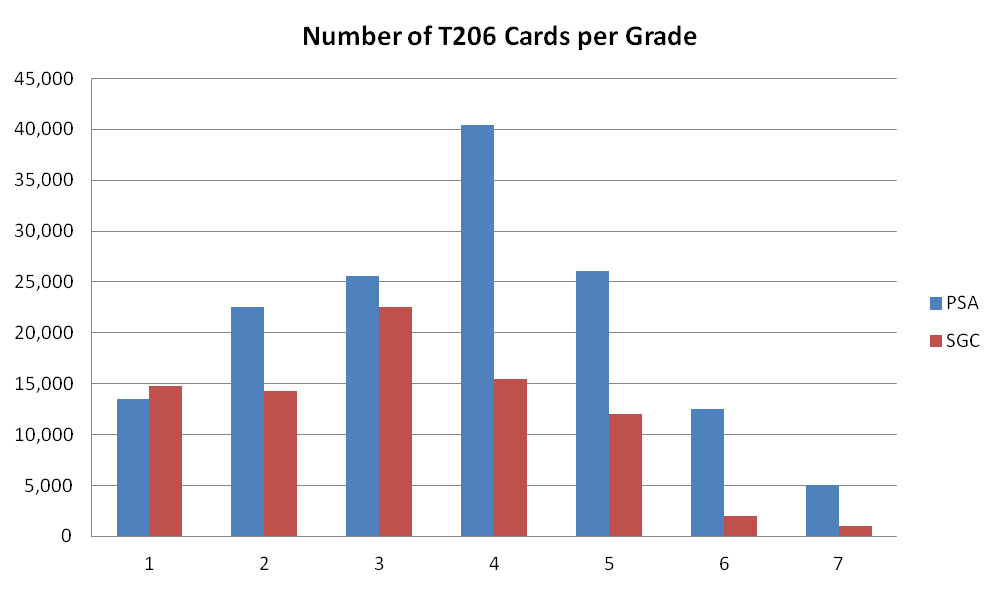
It seems as though SGC 3's are readily available and seemingly "high pop", so why would it be the only condition to carry a premium over PSA? You would think that the condition that has the highest supply would command a lower price, but this has not been the case across the board! PSA 6's and 7's are far more readily available than SGC, but they can carry a HUGE premium.
Why is it that the conditions with the highest populations carry a premium??
Well,
I believe a premium is established to the TPG company with the more readily accessible commons. It caters to the set collectors in us all, and set collectors are the driving force in establishing a value for commons. Think about it, there are very few Shad Berry collectors (not to pick on Shad Berry), and if there are any Shad Berry collectors, I doubt that there would be enough of them to influence the average price of a Shad Berry card. The collectors who purchase these low grade commons are doing so to "tackle the monster." They're trying to build sets on a budget with decent eye appeal.
But why SGC 3's??
Like I said in my previous post, SGC caters to the collector. Low grade tobacco cards look better in SGC holders. I know that this will be debated, but I believe the premium for SGC 3's is, in part, driven by the eye appeal of the case. This solely applies to low grade cards. The black background can really make a fugly card "pop". Personally, I prefer the look of high grade cards in PSA holders compared to SGC, but for low grade cards, SGC wins hands down.
But why the premium?
Well, set collectors love uniformity. Let's face it, we are obsessive people. While I know many of you have sets with a combination of SGC, PSA and raw cards, I know most of us prefer one TPG company or another. The reason PSA 6's carry a premium is because a collector can more easily assemble a mid grade set using PSA cards over SGC. SGC can carry a premium because it is just as easy to assemble a low grade set using SGC cards as it is with PSA. If I were to apply this to every pre-war set I guarantee we would see the same trends. Whichever TPG company has the more readily accessible commons will carry a premium. Essentially, the supply of the cards determines the demand and the demand then determines the price.
Interesting stuff
